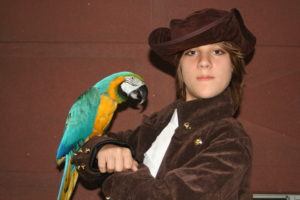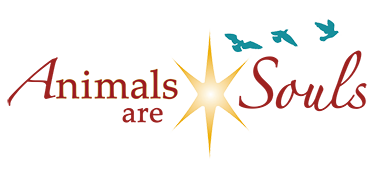 By Tammy Attama, Virginia
By Tammy Attama, Virginia
Harley, a macaw parrot rescued from a neglectful situation, came to me as a gift. The gift soon multiplied with spiritual treasures he brought into my life. His ability to respond to energies, sounds, and vibrations confirmed the value of my own sensitivities and inner guidance.
Macaws, native to the South American rain forest, fly in flocks many miles from their home in search of food. Naturally social, they learn to cooperate, groom, and share with each other for survival. The instincts of his breed must have made it especially tough on Harley in his previous home. The girl whose pet he had been moved away to college. After being left alone and living on hot dogs and pizza, Harley was in bad physical and emotional shape when he came to live with me.
As Harley started to become a member of our family, we both increased our capacity for giving and receiving love. Sri Harold Klemp, the spiritual leader of Eckankar, writes about how animals help to open people’s hearts to love. He says, “Our relationship with animals is often defined by what we most need to learn. Pets can teach us a great many things—patience, flexibility, how to live in the moment, how to laugh at ourselves. But most of all they can teach us how to give and receive unconditional love.”
Harley Schools the Flock
Although Harley and I were beginning to bond, my boys and their friends often teased that I was the only one Harley truly loved. I wish I could say that everyone in my household felt as much for him as I did.
Harley had to teach my children to play with him cautiously. Macaws have beaks that are strong enough to open nuts and seeds. If the children got too physical with him, he reminded them with a small nip of his beak that he was not their toy. Other times, he used his beak mischievously. He amused himself by grabbing my boys’ barefoot toes, giving them a quick bite, and running off to hide.
My kids were always yelling, “Mom!” I was like a second mom to their friends, so this is what they also called me. It always got my attention. Harley picked up this neat trick. It became common to hear him call, “Mom!” as soon as he heard my footsteps in the early morning or whenever I had been out of sight for too long.
I had carefully introduced Harley to our other pet family members and always watched when they were near each other. If Harley and the dogs were all on the floor, he liked to tease them. Noticing when they looked comfortable, he’d be annoying and run at them when they least expected it. My two dogs and, yes, even the two cats, would scramble to get out of his way if they saw Harley looking in their direction.
Harley and Me
Harley, like other flock animals, needed friendship. At first, he had been cautious about letting anyone hold him, but he began stepping up on my arm when I invited him to make it his perch.
A pet bird might be injured by flying into an object with moving parts, such as a ceiling fan. In Harley’s previous home, his wings had been clipped, and I kept them that way for his safety. Yet I wanted him to have the sensation of flying. As we became more familiar with each other, I took him for rides on my bicycle handlebars around the neighborhood or to the park or playground.
I only let Harley on the ground when I was nearby to keep an eye on him. He waddled like a duck, following me everywhere as I moved around the lower level of our house. When I went upstairs, he would use his powerful beak to quickly pull himself up fifteen steps to our second floor.
If I was hidden behind a closed door, Harley would peck at it until the door opened. Relieved to see that I was OK, he’d then leave, content that he had, once again, done his job of keeping me safe.
His perches, which he wouldn’t get off by himself, were in different parts of the house and on the patio. Outside, I gave him warm showers with the hose. He stayed in his big indoor cage when I went to bed for the night or left the house. Otherwise, he stood on top of the cage to watch the family activities.
My love for Harley and the way he was adapting to living with a human family made me start questioning whether he might be losing some “macaw-ness.” The decision I had to make next would turn out to be one of the hardest spiritual tests of my life.
(to be continued)
—Photo by Tammy Attama
Harley’s story is in three parts:
Part 1: “Harley, My Macaw Mirror” by Tammy Attama (posted)
Part 2: “Harley and His Human Flock” by Tammy Attama (posted)
Part 3: “Harley Finds a Macaw to Love” by Tammy Attama (to be posted)

What a powerful spiritual lesson Harley gives us not only in detatchment but true spiritual living and learning. Thank you Tammy! It wouldn’t be possible without your interpretation and sharing ✨✨✨
ohw no part 3 yet? Lovely story, can’t wait to read part 3
Lovely 🙂
Beautiful story!! Thanks for sharing! It ignites a desire within me to adopt such loving pets!
Looking forward to part 3.
Absolutely touching and sweet. Looking forward to reading Part 3.
Love this story! Looking forward to part 3
Superb sharing. Awaiting for part 3
Such a sweet story. I can’t wait to read Part 3!